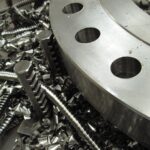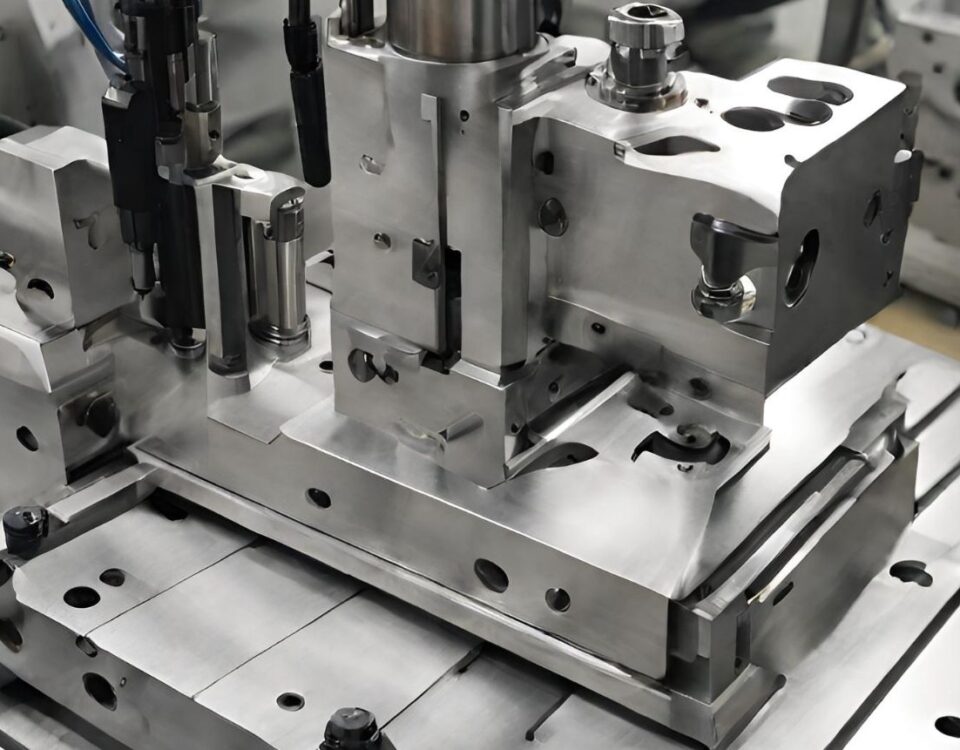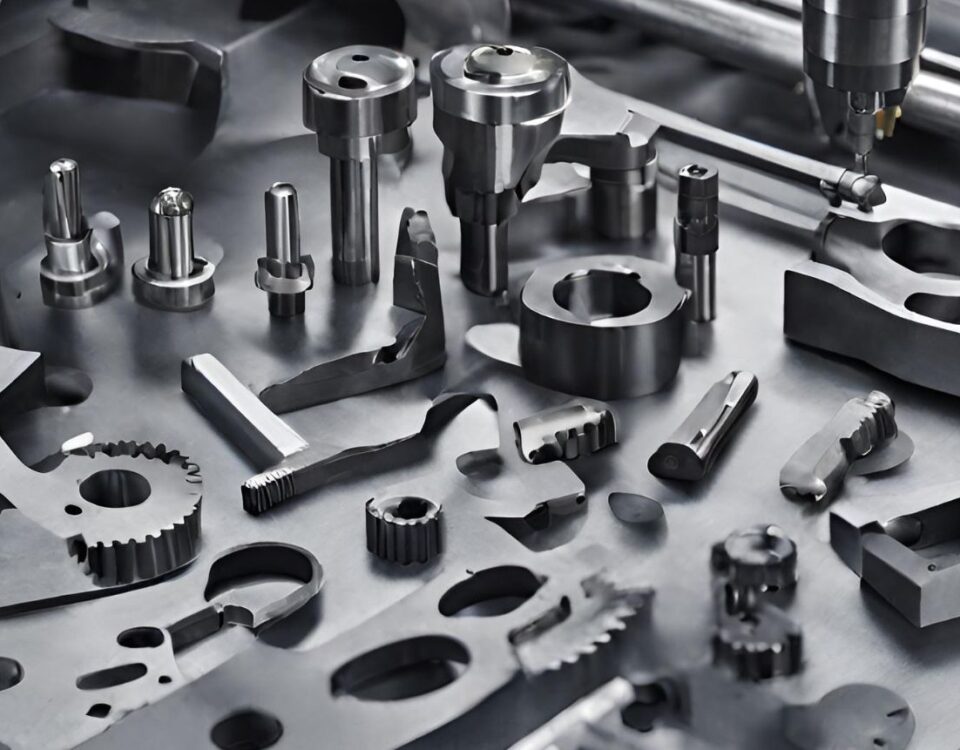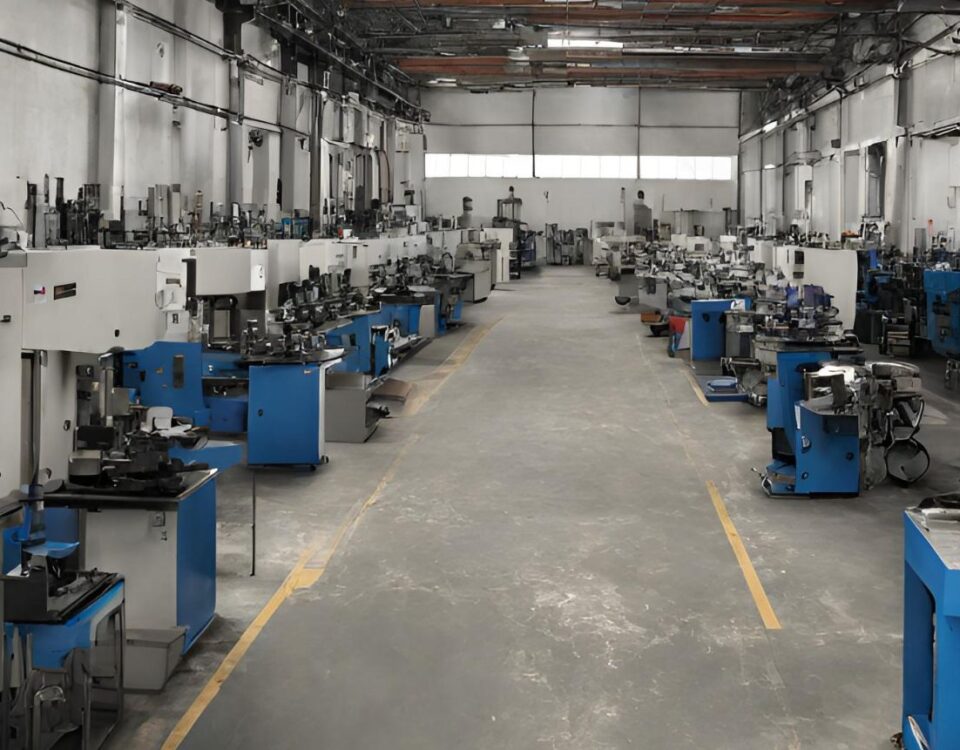
Appropriate Plastic for Project with CNC Plastics
7 December 2023
Types of Services for CNC Machining
12 December 2023In the basic manufacturing process of casting, molten metal is poured into a mold, which is a pre-made cavity, to create a solid object with the required structure and shape. Because of the process's affordability and adaptability, it is widely used in a variety of industries, including construction, automotive, and aerospace. When creating intricate details and precise dimensions in complex components, casting is an essential process.
Among the choices are investment casting, sand casting, die casting, and other casting methods. Each has advantages and can be used in a range of situations. It is essential for engineers and manufacturers to comprehend casting operation and different casting techniques in order to guarantee efficient production and high-quality finished products. The importance of casting, its primary varieties, and its methods of operation will all be covered in this article.
What Is Casting?
Casting refers to the process of selecting and hiring actors for a production, such as a film, television show, or play. The casting director or casting team evaluates actors based on their suitability for specific roles. They review auditions, conduct interviews, and make decisions on who will best bring the characters to life. Casting involves considering factors like an actor's talent, experience, appearance, and chemistry with other cast members. The goal is to assemble a talented ensemble that fits the vision of the project and can effectively portray the characters.
What Is the Importance of Casting in Manufacturing?
Casting plays a crucial role in manufacturing for several reasons:
1. Versatility: Casting allows for the production of complex shapes and intricate details that may be difficult or impossible to achieve through other manufacturing processes. It offers design flexibility and enables the creation of customized parts to meet specific requirements.
2. Material Selection: Casting allows for a wide range of materials to be used, including metals, alloys, and various types of plastic. This versatility allows manufacturers to choose materials with specific properties like strength, durability, heat resistance, or conductivity to suit the intended application.
3. Cost-Effectiveness: Casting can often be a cost-effective manufacturing method, particularly for producing large or complex parts. It eliminates the need for extensive machining and fabrication processes, reducing material waste and saving time and labor costs.
4. Production Efficiency: Casting is capable of producing a high volume of parts relatively quickly, making it suitable for mass production. It allows for the production of identical parts with consistent quality, ensuring efficiency and reducing variability.
5. Prototyping and Testing: Casting is commonly used for prototyping and testing new product designs before committing to expensive tooling and production processes. It enables manufacturers to evaluate the functionality, performance, and feasibility of a design before moving forward with full-scale production.
6. Durability and Strength: Casting can produce parts with high strength and durability, making them suitable for applications that require robust components. Cast parts can withstand extreme temperatures, pressures, and harsh environments, making them ideal for industries such as aerospace, automotive, and energy.
In summary, casting is essential in manufacturing due to its versatility, material selection options, cost-effectiveness, production efficiency, prototyping capabilities, and the ability to produce durable and strong parts. It offers manufacturers the flexibility to create complex shapes and meet specific requirements, making it a valuable process in various industries.
What Are the Different Types of Casting?
There are several different types of casting methods used in manufacturing. Here are some of the commonly used casting techniques:
1. Sand Casting: Sand casting is one of the oldest and most widely used casting methods. It involves creating a mold by packing sand around a pattern, removing the pattern, and then pouring molten metal into the mold cavity. Sand casting is versatile and can be used for both ferrous and non-ferrous metals.
2. Investment Casting: Also known as lost-wax casting, investment casting involves creating a wax pattern and coating it with a ceramic material. The wax is then melted out, leaving behind a hollow ceramic mold. Molten metal is poured into the mold, and once solidified, the ceramic shell is broken away to reveal the final cast part. Investment casting is used for intricate and high-quality parts.
3. Die Casting: Die casting is a process in which molten metal is forced into a reusable steel mold, called a die, under high pressure. The metal solidifies rapidly, and the mold is opened to remove the cast part. Die casting is commonly used for producing high-volume, complex, and dimensionally accurate parts, typically made of non-ferrous metals like aluminum, zinc, or magnesium.
4. Permanent Mold Casting: Permanent mold casting, also known as gravity die casting, utilizes reusable molds made of metal, typically steel or cast iron. The molten metal is poured into the mold under gravity, and once solidified, the mold is opened to extract the cast part. Permanent mold casting is commonly used for non-ferrous metals and allows for better surface finish and dimensional accuracy compared to sand casting.
5. Centrifugal Casting: Centrifugal casting involves rotating a mold at high speeds while pouring molten metal into it. The centrifugal force helps distribute the molten metal evenly, resulting in denser and void-free castings. Centrifugal casting is suitable for producing cylindrical or tubular-shaped parts, such as pipes, cylinders, or rings.
6. Shell Molding: Shell molding is a process that uses resin-coated sand to create a shell-like mold. The mold is formed by heating the sand-resin mixture and placing it on a pattern. Once the shell mold is formed, it is removed from the pattern, and molten metal is poured into the cavity. After solidification, the shell is broken away to retrieve the cast part.
These are just a few examples of casting methods used in manufacturing. Each technique has its advantages and is chosen based on factors such as the desired material, complexity of the part, production volume, and cost considerations.
What Is the Process of Casting?
The casting process typically involves the following steps:
- Pattern Creation: A pattern is created, which is a replica of the desired part. It can be made from various materials such as wood, plastic, or metal. The pattern is typically larger than the final part to accommodate shrinkage during solidification.
- Mold Preparation: A mold is made by enclosing the pattern in a material like sand, clay, or plaster. The mold is created in two halves, known as the cope and drag, which are separated to remove the pattern and allow for the pouring of molten material.
- Mold Assembly: The cope and drag halves are brought together to form the complete mold. Channels, called sprues, runners, and gates, are included in the mold to allow for the flow of molten material into the mold cavity and the escape of gases.
- Melting and Pouring: The material to be cast, such as metal or alloy, is melted in a furnace. Once molten, it is poured into the mold through the sprue. The pouring process must be carefully done to ensure proper filling of the mold and avoid defects like air pockets or incomplete filling.
- Solidification: After the molten material is poured into the mold, it begins to cool and solidify. The cooling rate and time depend on the material being cast and the size and complexity of the part. During solidification, the material takes the shape of the mold cavity, forming the desired part.
- Mold Break and Finishing: Once the material has solidified completely, the mold is opened, and the cast part is removed. Excess material, known as casting flash, is trimmed off, and any rough surfaces or imperfections are smoothed or machined to achieve the desired finish. Additional post-processing steps, such as heat treatment, surface coating, or machining, may be performed depending on the requirements of the final part.
It is important to note that the casting process can vary depending on the specific casting method being used, such as sand casting, investment casting, or die casting. Each method has its own unique variations and intricacies, but the general steps of pattern creation, mold preparation, mold assembly, melting and pouring, solidification, mold break, and finishing are typically followed in most casting processes.
Conclusion
In conclusion, casting is a manufacturing process that involves pouring molten material into a mold and allowing it to solidify, resulting in the creation of complex-shaped objects. The process begins with pattern creation, followed by mold preparation and assembly. The molten material is then poured into the mold, and solidification occurs as the material cools. After solidification, the mold is broken, and the cast part is finished through trimming, grinding, or other post-casting processes.
Several strategies are crucial for successful casting. These include careful pattern creation to ensure accurate replication, proper mold preparation using suitable materials, and precise pouring techniques to achieve uniform filling of the mold. Controlling solidification through cooling rate and the use of techniques like directional solidification helps prevent defects. Finally, post-casting finishing operations ensure the desired dimensions and surface quality.
By implementing these strategies, manufacturers can produce high-quality castings that meet the desired specifications and functional requirements. Casting methods such as sand casting, investment casting, or die casting offer various advantages and are chosen based on factors like part complexity and production volume. With attention to detail, quality control, and continuous improvement, casting remains a reliable and versatile manufacturing process for creating a wide range of components across different industries.




